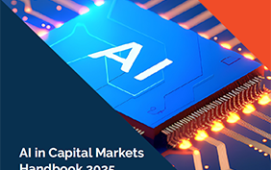
Data science and analytics are critical to driving value out of data, delivering business insight at speed, and gaining competitive advantage. With so much at stake, financial institutions need a strategy that puts data scientists in business units, identifies appropriate technologies and tools, and scales solutions beyond proofs of concept.
This week’s A-Team Group webinar on data science and analytics will cover the role of data scientists, steps you can take to develop analytics that provide business insight, how to overcome challenges along the way, how to win management buy-in and more. Discussing these issues will be Arijit Bhattacharya, executive director of analytics at UBS; Stef Nielen, director of strategic business development at Asset Control; and James Corcoran, chief technology officer, enterprise solutions at Kx Systems.
Previewing the webinar, Corcoran notes the multi-disciplinary nature of data scientists, who need to be experts in all aspects of data, including architecture, engineering, analytics, and machine learning. The best will also have vertical domain knowledge and all will need to converse with the business.
Corcoran notes data architecture as the starting point for analytics projects, saying: “Projects tend to fail if you think of them as point solutions. You need to prioritise data architecture and data across the business. If you do this, data scientists working with machine learning should be able to provide good quality, timely and ideally real-time insights into data.”
Nielen takes a slightly different approach, proposing an iterative process of gathering required data, and cleaning and consolidating the data to provide a central source. Open source technologies and tools, particularly AI applications based on R and Python, such as Tensorflow, can then be used to interrogate and analyse data on the central platform.
Nielen comments: “These languages have progressed rapidly in recent years. They are modern and easy to learn, allowing both quants and portfolio managers to use them. With a few lines of code you can do tremendous things.”
Subscribe to our newsletter




